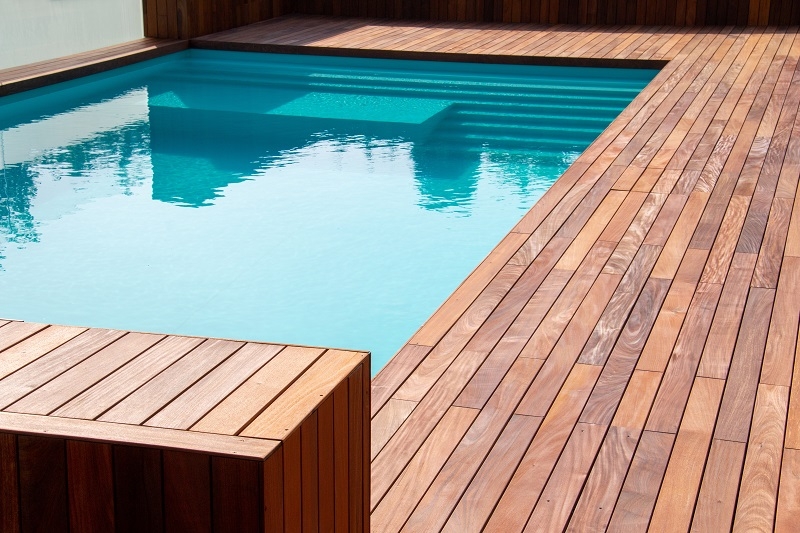Published: 04/09/23 By: Mike Bekin
Decking can transform an outdoor space. From creating a level garden to adding a lovely al fresco dining spot to your home, for many lovers of the outdoors, it is a no-brainer. But there is one thing that can put people off, and that is the thought of slippery decking. Fortunately though, there are tons of solutions to a wet deck that will ensure you put safety first, even in Great British rainy weather. Let’s take a look.
What Makes a Deck Slippery?
Before looking at solutions, it is a good idea to understand what actually makes timber decking slippery. It all starts with water. When wood becomes damp or collects puddles of water on its surface, moss, mould and algae can all start to form. If the wood does not dry out, these growths can continue to flourish, and the issue here is that they can become quite slippery.
So, contrary to popular belief, it is not water that makes your timber deck slippery, but the algae, moss and mould that grows because of damp wood.
It is also important to note that a build-up of damp leaves also is not good. As the leaves rot, they become incredibly slippery and can always damage the timber of your decking, creating a bit of a mess. Frost and snow can also make a deck slippery, and we will cover how to deal with cold conditions later in this guide.
Keep Your Deck Clean and Clear
The first step to keeping your deck safe to roam about on, therefore, is keeping it clean and clear of algae and leaves. It is important to clear debris on a dry day, preferably using a stiff brush to get properly into all the crevices of your boards. Decking cleaner can help, too, as can a specific moss and algae cleaner if your timber is in need of a lot of attention.
If you want to use a pressure washer to clean your decking, be very careful not to damage the wood. Only use the washer on the lowest pressure setting and, if possible, get rid of debris using the better alternative of a brush instead.
Add GripChoice Anti-Slip Strips
Once you have cleared your deck of debris and algae, it is time to add some extra grip. We recommend Grip-Choice anti-slip strips developed by our timber decking experts, which can be added to your boards before or after installation. Adding plenty of friction to your timber, the strips bring high-quality slip resistance to optimise your deck for use. The strips are pre-poured into grooves prior to delivery or can be retrospectively screwed directly into the boards for a secure, long-lasting fit, and are crafted from premium materials to keep your decking safe in the frostiest of weather.
Dealing With Frost and Snow
Frost, ice and snow can all turn your decking into a pretty slippery spot. To remove snow and ice, use a plastic tool to scrape away the surface layer; avoid using any metal so that you do not damage the timber. Never use rock salt or ice melting liquid on your deck, unless it is specifically designed for timber use. Instead, keep scraping away the ice and wait for warmer days.
Protect Your Decking
Another method to reduce the chances of slipping on your decking is to protect it. A timber oil, for example, is ideal for keeping water out of the wood so that it stays dry and is less likely to develop algae. Slip resistant coatings are also available and can be used alongside Grip-Choice strips.
Find Premium Decking at EcoChoice
At EcoChoice, we are experts in all things decking related. Whether you are looking for sustainable timber to build a new deck in your garden or would like recommendations on maintenance products, we can help. Simply get in touch with our team today and let us get the ball rolling on your decking project.
Image: Radoslav Cajkovic / Shutterstock.com
